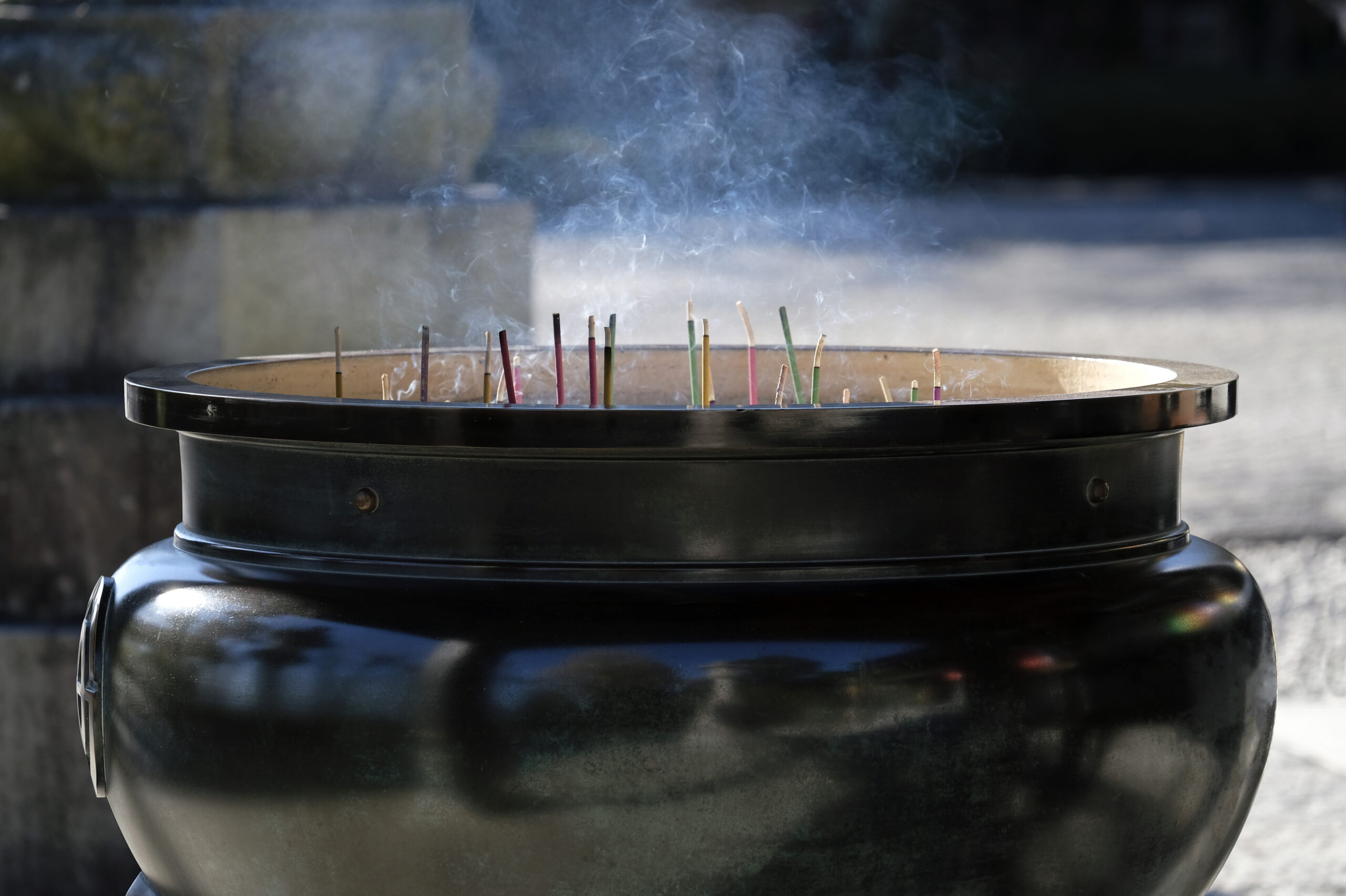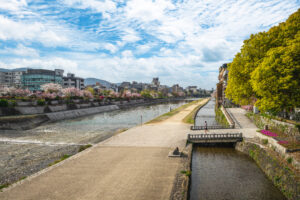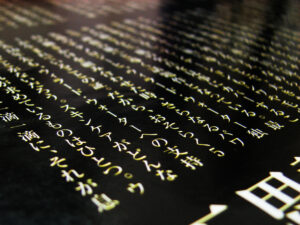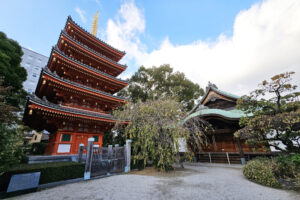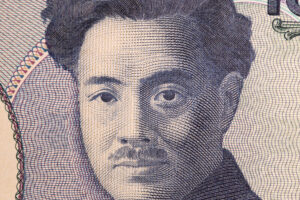The Kamakura Temple, nestled in the serene hills of Kanagawa Prefecture, Japan, stands as a testament to the country’s rich spiritual heritage and architectural beauty. Among its most captivating features is the sacred incense burner, a symbol of reverence and tranquility that attracts both pilgrims and tourists alike. This article delves into the multifaceted significance of the incense burner, exploring its artistry, historical context, and the rituals that honor it, as well as the broader implications of incense burning in Japanese Buddhist traditions.
1. Discovering the Spiritual Significance of Kamakura Temple
Kamakura Temple, officially known as Kōtoku-in, is revered not only for its stunning Great Buddha but also for its serene atmosphere that encourages spiritual reflection. The temple is a sanctuary for those seeking solace, guidance, or a deeper connection to the divine. At the heart of this spiritual experience lies the sacred incense burner, which plays a central role in the temple’s rituals and practices.
The act of burning incense is steeped in tradition, symbolizing the purification of the mind and the offering of prayers to the Buddha. As the fragrant smoke wafts into the air, it serves as a medium through which devotees can communicate with the spiritual realm. This connection is what draws many to the temple, seeking peace and inspiration amid their daily lives.
Beyond its physical presence, the incense burner reflects the broader philosophies of Buddhism, which emphasize mindfulness, impermanence, and the importance of living in harmony with oneself and the universe. Visitors are often encouraged to pause, breathe in the incense, and partake in the meditative practices surrounding it.
The incense burner also fosters a sense of community among worshippers; gatherings around it can lead to shared experiences and collective prayers, reinforcing the bonds between individuals and their faith. This spiritual significance transforms the burner into more than just an object; it becomes a focal point of devotion and communal identity.
Kamakura Temple stands as a reminder of the deep spiritual roots that permeate Japanese culture. The sacred incense burner embodies this rich heritage, inviting all who visit to reflect on their own spiritual journeys.
The interplay of spirituality and tradition at Kamakura Temple creates an environment that nurtures the soul, making it a place where the sacred and the everyday seamlessly blend.
2. The Artistry Behind the Sacred Incense Burner
One cannot overlook the exquisite craftsmanship of the sacred incense burner at Kamakura Temple. Its design is a harmonious blend of functionality and artistic expression, showcasing the skills of artisans who have honed their craft over generations. The burner is typically made from bronze or other metals, with intricate engravings that depict symbolic motifs relevant to Buddhism.
Each element of the incense burner is carefully considered, from its shape and size to the materials used in its construction. The use of natural materials signifies a connection to the earth, while the ornate designs reflect the aesthetic values of Japanese culture. The craftsmanship not only serves a practical purpose but also elevates the incense burner to a work of art in its own right.
The visual appeal of the burner is complemented by its sensory attributes; the aroma released during burning adds another layer to the experience. The incense itself is often composed of a blend of natural ingredients, including herbs, flowers, and resins, chosen for their soothing fragrances and spiritual properties.
Visitors are often struck by the juxtaposition of the burner’s physical beauty and its spiritual significance. Many find themselves both admiring the craftsmanship and contemplating the deeper meanings behind the rituals associated with it. This duality contributes to the ambiance of the temple, making it a place of both visual and spiritual inspiration.
The artisans responsible for creating such works often draw from centuries of tradition, passing down techniques and knowledge through familial lines. This continuity of craftsmanship ensures that each incense burner not only serves its purpose but also tells a story, representing the hopes and prayers of those who have come before.
Ultimately, the artistry behind the sacred incense burner at Kamakura Temple adds depth to the spiritual experience, inviting visitors to appreciate the beauty of both the object and the traditions it embodies.
3. Historical Context: Kamakura Temple’s Rich Heritage
In order to fully understand the significance of the sacred incense burner, one must delve into the historical context of Kamakura Temple itself. Established in the 13th century, the temple has a storied past that reflects the socio-political and religious changes of its time. Originally founded as a place of worship for the Kamakura shogunate in 1252, it quickly became a spiritual center for the samurai class.
The temple’s construction coincided with the rise of Zen Buddhism in Japan, which emphasized simplicity, meditation, and direct experience of enlightenment. This influence is evident in the design of the temple and its surrounding gardens, which evoke a sense of tranquility that aligns with Zen principles. The sacred incense burner became a significant feature of these practices, serving as a tool for meditation and reflection.
Throughout the centuries, Kamakura Temple has been a witness to historical events, including wars, natural disasters, and the evolution of Japanese society. Despite numerous challenges, the temple has persevered, embodying resilience and continuity. It has survived fires, invasions, and the changing ideals of each era, adapting while retaining its core spiritual mission.
The incense burner, as part of this rich heritage, has been utilized by countless generations seeking solace and enlightenment. Its enduring presence symbolizes not only the temple’s historical significance but also the lasting power of faith in times of uncertainty.
In the modern era, Kamakura Temple continues to attract visitors from around the world, who come to appreciate its historical context and spiritual aura. The temple serves as a reminder of Japan’s complex history, providing insight into the cultural values that have shaped the nation.
The interplay between history and spirituality at Kamakura Temple makes it a fascinating destination for those wishing to delve deeper into Japan’s past while engaging with its present.
4. A Closer Look at the Incense Burner’s Design Features
The sacred incense burner at Kamakura Temple is not merely a functional object; it is a masterpiece of design that draws the attention of visitors and worshippers alike. At first glance, one can appreciate the intricate detailing that characterizes its form. Crafted from high-quality materials, it exhibits a lustrous finish that reflects the light beautifully, adding to the temple’s serene atmosphere.
One of the most striking features of the incense burner is its ornate lid, often adorned with finely detailed carvings that depict auspicious symbols from Buddhist tradition. These motifs serve not only as decoration but also as reminders of the virtues one should cultivate, such as compassion and wisdom. The lid is designed to fit snugly, allowing the incense to smolder gently while releasing fragrant smoke into the air.
The cylindrical shape of the burner is particularly significant, representing the cycle of life and death—a core principle in Buddhist teachings. The design invites a contemplative mindset, urging visitors to reflect on the transient nature of existence. The base of the burner is often embellished with lotus patterns, symbolizing purity and enlightenment, further emphasizing its spiritual role.
Moreover, the positioning of the incense burner within the temple grounds is intentional. Often located in a prominent area, it serves as a focal point for both worship and meditation. This placement encourages devotees to pause, engage with the incense, and immerse themselves in the surrounding spiritual energy.
The practicality of the incense burner is equally noteworthy. Designed to accommodate various types of incense, it allows for flexibility in ritual practices. Whether for personal meditation or communal worship, the burner adapts to the diverse needs of the temple’s visitors.
In examining the design features of the sacred incense burner, one gains insight into the meticulous care that goes into creating objects of worship in Japanese culture. Each detail is imbued with meaning, reflecting the intertwined nature of art, spirituality, and community.
5. Rituals and Practices Surrounding the Incense Burner
The sacred incense burner at Kamakura Temple is central to several rituals and practices that enhance the spiritual experience for visitors. One of the most common rituals involves the act of offering incense to the Buddha, a practice that dates back centuries in Buddhist traditions. Devotees often prepare incense sticks, which they light and then place within the burner, signifying their prayers and intentions.
The ritual of incense offering is typically accompanied by a moment of silence or meditation, where individuals are encouraged to reflect on their thoughts and feelings. This contemplative practice fosters a sense of mindfulness, allowing worshippers to connect with their inner selves and the spiritual energy of the temple. The scent of the burning incense creates an atmosphere conducive to meditation, enhancing the overall experience.
On special occasions, such as festivals or religious observances, the incense burner may play an even more prominent role. Monks often lead ceremonies that include chanting, prayers, and the ceremonial lighting of incense. These gatherings attract large crowds, transforming the temple into a vibrant hub of spiritual activity, where the sacred smoke serves as a bridge between the earthly and divine realms.
In addition to personal rituals, the incense burner also serves as a focal point for community events. Group meditations or ceremonies often center around the burner, reinforcing communal bonds and shared spiritual goals. Participants feel a collective sense of purpose as they engage in these practices, united by their faith and the symbolic importance of the incense.
For many visitors, the act of engaging with the incense burner transcends mere observation; it becomes an immersive experience that invites deeper reflection and connection. Even those who may not identify as Buddhists find value in the rituals, as they offer a space for introspection and serenity.
By participating in these rituals, visitors not only honor the traditions of Kamakura Temple but also enrich their own spiritual journeys, creating lasting memories and insights that resonate long after their visit.
6. The Role of Incense in Japanese Buddhist Traditions
Incense has long held a vital role in Japanese Buddhist traditions, symbolizing purification, offering, and communication with the divine. The practice of burning incense is deeply embedded in the rituals of Buddhism, serving as a means to honor the Buddha and express devotion. At Kamakura Temple, this tradition is upheld through the sacred incense burner, which facilitates these spiritual connections.
Historically, incense was introduced to Japan from China, where it was integrated into Buddhist practices. Over time, distinct Japanese styles of incense making developed, characterized by unique blends of natural ingredients. These variations reflect the cultural influences of Japan, including its connection to nature and aesthetics. The specific choice of incense can enhance the spiritual atmosphere, creating a unique sensory experience for worshippers.
The act of burning incense is also believed to purify the mind and body, preparing individuals for meditation and prayer. As the fragrant smoke rises, practitioners are reminded of the ephemeral nature of life, a teaching central to Buddhist philosophy. This connection to impermanence fosters a sense of awareness and presence, vital components of the meditative practice.
Moreover, incense burning serves a communal purpose in Japanese Buddhist rituals. During ceremonies, the collective act of offering incense can create a powerful sense of unity among participants. This shared experience enhances the spiritual energy of the gathering, reinforcing the bonds between individuals and their shared beliefs.
Visitors to Kamakura Temple often find themselves drawn to the aromatic ambiance created by the incense burner. The soothing fragrances can provide comfort and solace, particularly for those navigating difficult times. Engaging with the incense allows visitors to pause, reflect, and connect with the larger themes of life that resonate within Buddhist teachings.
Ultimately, the role of incense in Japanese Buddhist traditions is multifaceted, encompassing purification, offering, and the promotion of mindfulness. At Kamakura Temple, this practice continues to flourish, inviting all who visit to explore the depth of its significance.
7. Visiting Hours and Accessibility for Temple Tourists
Kamakura Temple is open to the public year-round, providing an accessible spiritual haven for tourists and locals alike. Visitors can explore the temple grounds from early morning until late afternoon, with specific hours varying by season. Typically, the temple opens around 8:00 AM and closes by 5:00 PM, making it easy for those with varying schedules to partake in its serene atmosphere.
The temple is conveniently located near Kamakura Station, making it easily reachable via public transportation. For those traveling from Tokyo, a short train ride yields a picturesque journey through Japan’s beautiful countryside. Upon arrival, visitors are greeted with the stunning sight of the temple’s architecture, which sets the tone for a transformative experience.
Accessibility is a priority for Kamakura Temple. The grounds are designed to accommodate individuals with mobility challenges, featuring paved pathways and ramps. Monks and staff are often available to assist visitors, ensuring that everyone can partake in the rituals and offerings surrounding the sacred incense burner.
Visitors are encouraged to dress modestly and respectfully, as is customary in places of worship. This consideration enhances the spiritual environment, allowing individuals to engage more fully with the temple’s practices and rituals. Guided tours are also available, offering insights into the temple’s history, architecture, and the significance of the incense burner.
Photography is permitted in designated areas, providing an opportunity for visitors to capture the beauty of the incense burner and other temple features. However, guests are reminded to maintain a respectful demeanor, especially during ceremonial rituals, as some areas may require silence and reflection.
Overall, Kamakura Temple strives to create an inclusive atmosphere that welcomes individuals from all walks of life. Whether seeking spiritual guidance or simply appreciating the artistry of the incense burner, visitors are invited to explore and engage with this sacred space.
8. How the Incense Burner Attracts Pilgrims and Visitors
The sacred incense burner at Kamakura Temple has become a focal point for both pilgrims and casual visitors, drawing individuals from various backgrounds and beliefs. Its significance extends beyond its physical presence; the burner embodies the rich tapestry of spiritual traditions, offering a unique experience that resonates with many.
For pilgrims, the act of visiting Kamakura Temple often symbolizes a journey of faith and reflection. The incense burner serves as a tangible representation of their spiritual aspirations, where each offering of incense becomes a prayerful meditation. Many travelers embark on this pilgrimage to seek enlightenment, guidance, or solace, finding comfort in the act of engaging with the sacred burner.
Tourists, on the other hand, are often captivated by the aesthetic beauty and historical significance of the incense burner. The intricate craftsmanship and the serene setting provide a perfect backdrop for photography and contemplation. Many visitors find themselves drawn to the aroma of the incense, which creates a calming atmosphere that encourages mindfulness and introspection.
Furthermore, word of mouth and social media have amplified the allure of the sacred incense burner. Travelers who share their experiences online often inspire others to visit, intrigued by the stories and visuals that highlight the temple’s spiritual ambiance. This digital age of storytelling has expanded the reach of Kamakura Temple, attracting an even more diverse array of visitors.
The temple’s engagement with the community also plays a role in drawing people in. Events, ceremonies, and workshops centered around the incense burner create opportunities for people to learn about its significance and participate in rituals. These interactions foster a sense of belonging and connection, encouraging attendees to return.
In essence, the incense burner at Kamakura Temple serves as a magnet for both pilgrims and tourists, embodying a blend of spiritual depth and artistic beauty. Its ability to connect individuals to their own journeys—whether personal or cultural—ensures its enduring appeal.
9. Environmental Impact of Incense Burning at Temples
While the sacred incense burner at Kamakura Temple holds significant spiritual value, it also raises important questions regarding its environmental impact. The burning of incense, particularly in large quantities during rituals, can release particulate matter and volatile organic compounds into the air. As awareness of environmental issues grows, many temples are exploring sustainable practices to mitigate these effects.
In recent years, some temples have begun to adopt eco-friendly incense options made from natural, organic materials. These alternatives produce less harmful emissions and are crafted with sustainability in mind, reflecting a growing commitment to environmentally conscious practices within the Buddhist community. Kamakura Temple is no exception, often sourcing incense that aligns with these values.
Moreover, there is a heightened awareness of the importance of maintaining the natural surroundings of the temple. The lush gardens and green spaces that characterize the temple grounds are not just aesthetic; they play a crucial role in supporting local biodiversity and improving air quality. Efforts to preserve these areas ensure that the spiritual and natural environments coexist harmoniously.
Another consideration is the waste generated from incense offerings. Many temples are now implementing recycling programs for the materials used in incense packaging, making efforts to reduce their carbon footprint. By educating visitors about responsible disposal and recycling practices, temples encourage a collective commitment to environmental stewardship.
The discussions surrounding the environmental impact of incense burning also serve as an opportunity for spiritual reflection. Just as incense symbolizes the impermanence of life, it prompts a deeper consideration of our relationship with nature and the legacy we leave behind. This awareness aligns with Buddhist principles, which emphasize living in harmony with the environment.
In conclusion, while the sacred incense burner remains a cherished element of Kamakura Temple’s spiritual practices, it has also spurred important conversations about sustainability and environmental consciousness within the Buddhist community. The temple’s ongoing efforts to balance tradition with ecological responsibility ensure that it remains a relevant and revered site for generations to come.
10. Interviews with Monks: Insights on Incense Rituals
In an effort to gain a deeper understanding of the role of the sacred incense burner at Kamakura Temple, interviews with the resident monks offer valuable insights into the rituals and practices that surround it. Monks at the temple often emphasize the importance of intention behind the act of burning incense. "When we offer incense, we are not just creating a pleasant aroma," explains one monk. "We are sending our prayers and hopes into the universe, connecting with something greater than ourselves."
The monks also highlight the therapeutic aspects of incense rituals. Many describe the calming effects of the incense on both the mind and spirit, noting how it aids in meditation and mindfulness practices. "The fragrance helps to clear the mind and create a peaceful atmosphere," says another monk. "It allows us to focus inward, fostering a deeper connection with our thoughts and emotions."
During special ceremonies, the monks engage in elaborate rituals involving the incense burner. These ceremonies often include chanting and communal offerings, creating a sense of unity among participants. "When we gather around the burner, it becomes a shared experience of devotion and community," one monk remarks. "The smoke serves as a bridge that connects us all."
The monks also recognize the significance of the incense burner as a teaching tool. "It serves as a reminder of the impermanence of life," explains a senior monk. "As the incense burns down, we are reminded that everything is fleeting, and we must cherish each moment." This philosophical perspective resonates with both monks and visitors, fostering a sense of mindfulness and awareness.
In addition to its spiritual significance, the monks acknowledge the importance of educating visitors about the rituals surrounding the incense burner. They regularly conduct workshops and guided meditations, inviting guests to engage with the practices and understand their deeper meanings. "We want everyone to feel connected to this space and to the rituals we perform," one monk states.
Through these interviews, it becomes clear that the sacred incense burner at Kamakura Temple is not just an object of beauty; it is a vital component of the spiritual journey for both monks and visitors. The rituals surrounding it foster connection, reflection, and insight, bridging the gap between the earthly and the divine.
11. The Incense Burner: A Symbol of Peace and Reflection
The sacred incense burner at Kamakura Temple transcends its physical form, serving as a powerful symbol of peace and reflection in the lives of those who encounter it. As visitors engage with the rituals surrounding the burner, they are often struck by a profound sense of tranquility that permeates the temple grounds. This atmosphere fosters deeper contemplation and a connection to one’s inner self.
The act of offering incense is a deeply personal experience for many. As devotees light their incense sticks and place them within the burner, they are invited to pause and reflect on their intentions. This moment of stillness creates an opportunity for mindfulness, allowing individuals to connect with their thoughts and emotions in a sacred space.
Moreover, the incense burner’s
